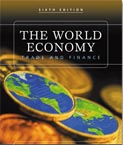Australia worries wealth not spreading to the middle
Sydney -  It's a measure of the strength of the economy that analysts squabble over whether the next move in interest rates by the Reserve Bank of Australia would be up or down.
It's a measure of the strength of the economy that analysts squabble over whether the next move in interest rates by the Reserve Bank of Australia would be up or down.
Interest rates go up when times are good to slow demand and curb inflation. In bad times, when money is short and demand is slack, they fall.
In Australia, times are good: The government isn't carrying any debt, it has a surplus of 21 billion Australian dollars (17 billion US dollars) and figures out this week showed export earnings would hit record levels this year.
Demand is strong for Australia's two top exports - coal and iron ore - and earnings from these and other minerals were expected to jump 53 per cent.
Down on the farm, things are looking up, too. Official figures are for a 9-per-cent rise in agricultural export earnings for this fiscal year, attendant on bigger harvests of wheat, canola, barley and other grains.
Because the big customers for Australia's quarry and farm produce - China, Japan, India and South Korea - are also doing well, money was expected to continue rolling in.
But most Australians think the economy is on the skids. Those who live in the middle in-between the resource-rich states of Western Australia and Queensland have lost confidence that the 16-year run of fast-paced economic growth would continue.
The national economy is growing at just a quarter of the rate of a year ago. Predictions for the year are a slowing to 2.75 per cent from 3.5 per cent.
Business confidence has fallen to its lowest level in 19 years as executives worry about contagion from the slump in the global economy. Credit growth has collapsed as householders put spending plans on hold for fear they might lose their jobs, their homes and their savings.
Reserve Bank Governor Glenn Stevens - who presides over the central bank's monthly meetings, the next coming October 7 - is hinting that interest rates, which he cut a quarter of a per cent a month ago to 7 per cent, would fall again.
"It's possible that we are witnessing the early part of a new phase where the household spending and borrowing dynamic is different from the past decade and a half," he told a business gathering in Sydney.
The credit binge might be reversing, and Australians might be rediscovering the joys of saving.
It's the steep fall in consumption that is behind the slowing of the economy. Real estate agents can't sell houses. Petrol stations complained of poor sales because people are driving less. Butchers said their customers are asking for cheaper cuts of meat.
Among the other signs of an economy coming off the boil is the commentary coming from its guardians. Treasurer Wayne Swan, who six months ago was warning that the "inflation genie has escaped from the bottle" and that interest rates would likely have to rise, is now talking up the economy's abiding strength.
"Australia's largest four banks are among only 12 of the world's top 100 banks with a credit rating of AA or above," he said. And Australia was different, Swan said, because only 1 per cent of mortgages in Australia were in the subprime category compared with 15 per cent in the United States.
The Australian financial services industry is indeed different. "Australian banks are not investment banks and most of the difficulty we have witnessed so far has been in investment banks in the US," said David Murray, the former head of the Commonwealth Bank.
It was an observation also made by Stevens, who predicted Commonwealth and the three other big high street banks in Australia would remain profitable and "light years away from what is happening in other banking systems around the world." (dpa)